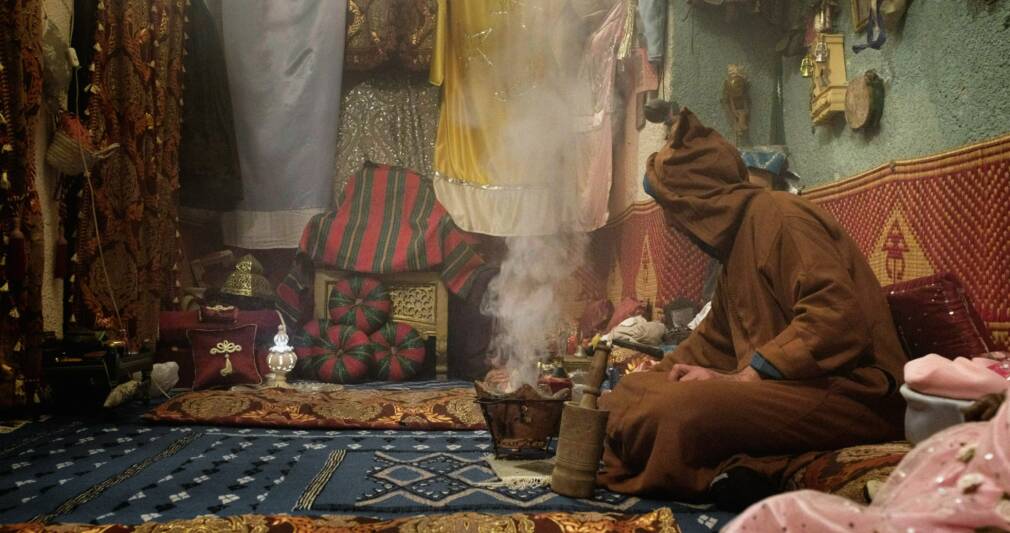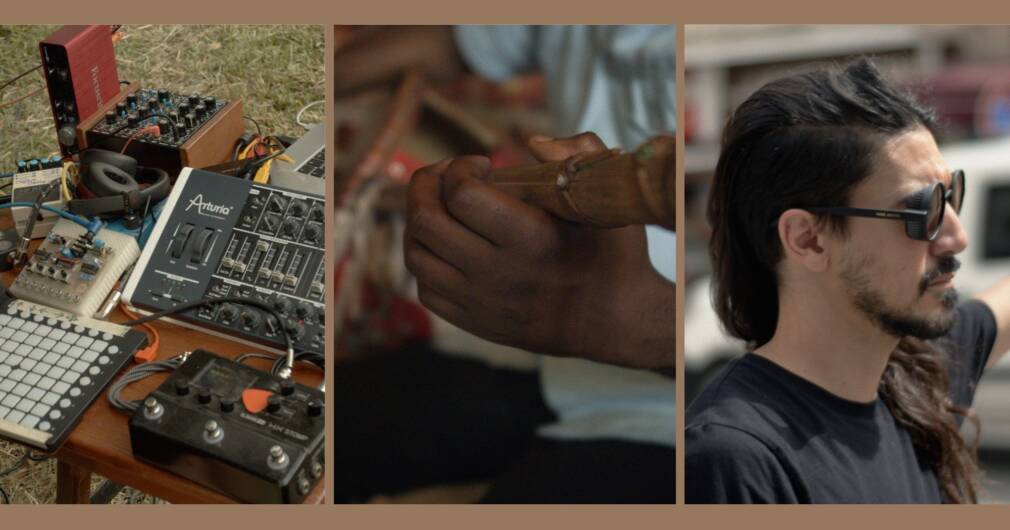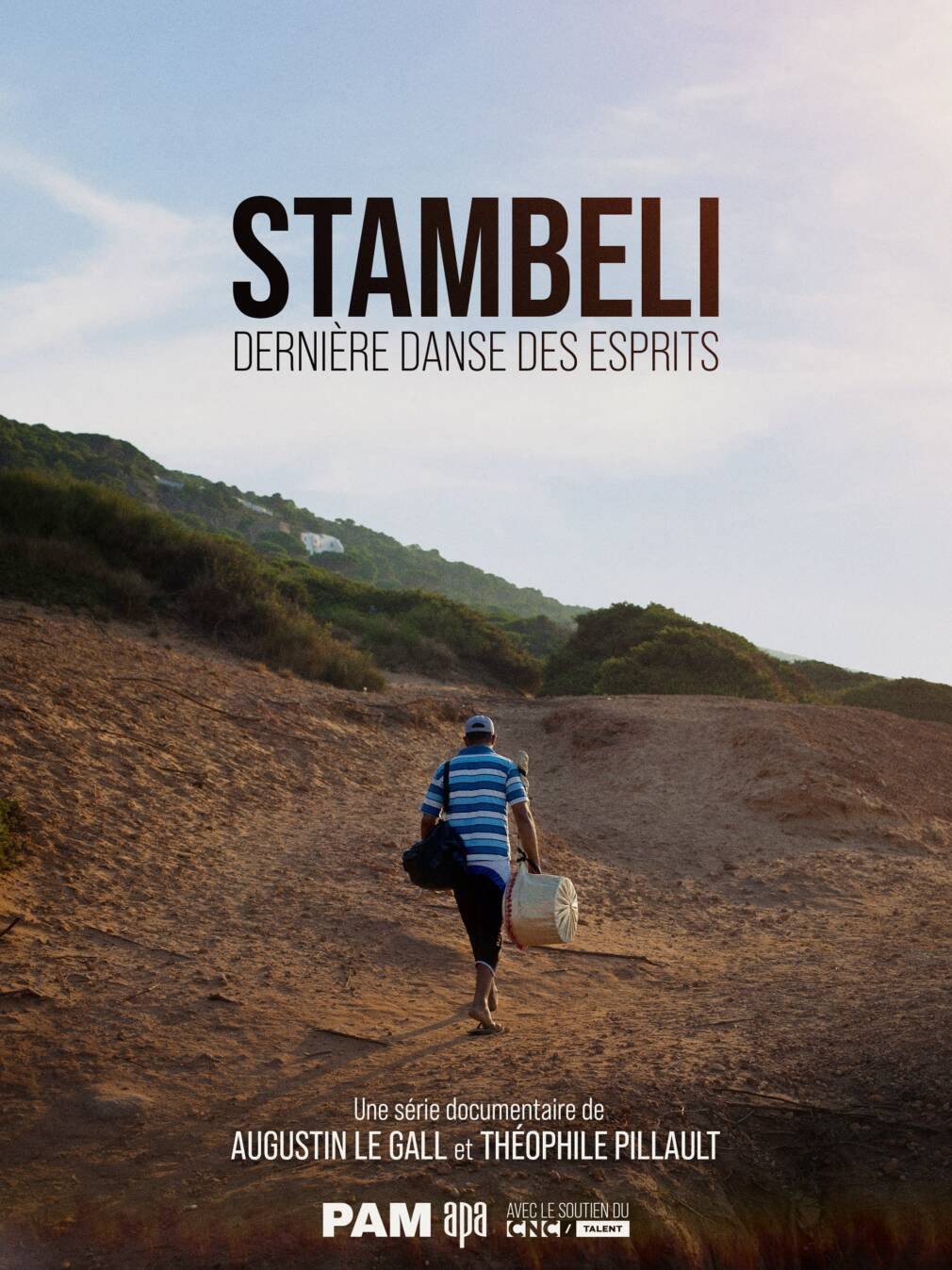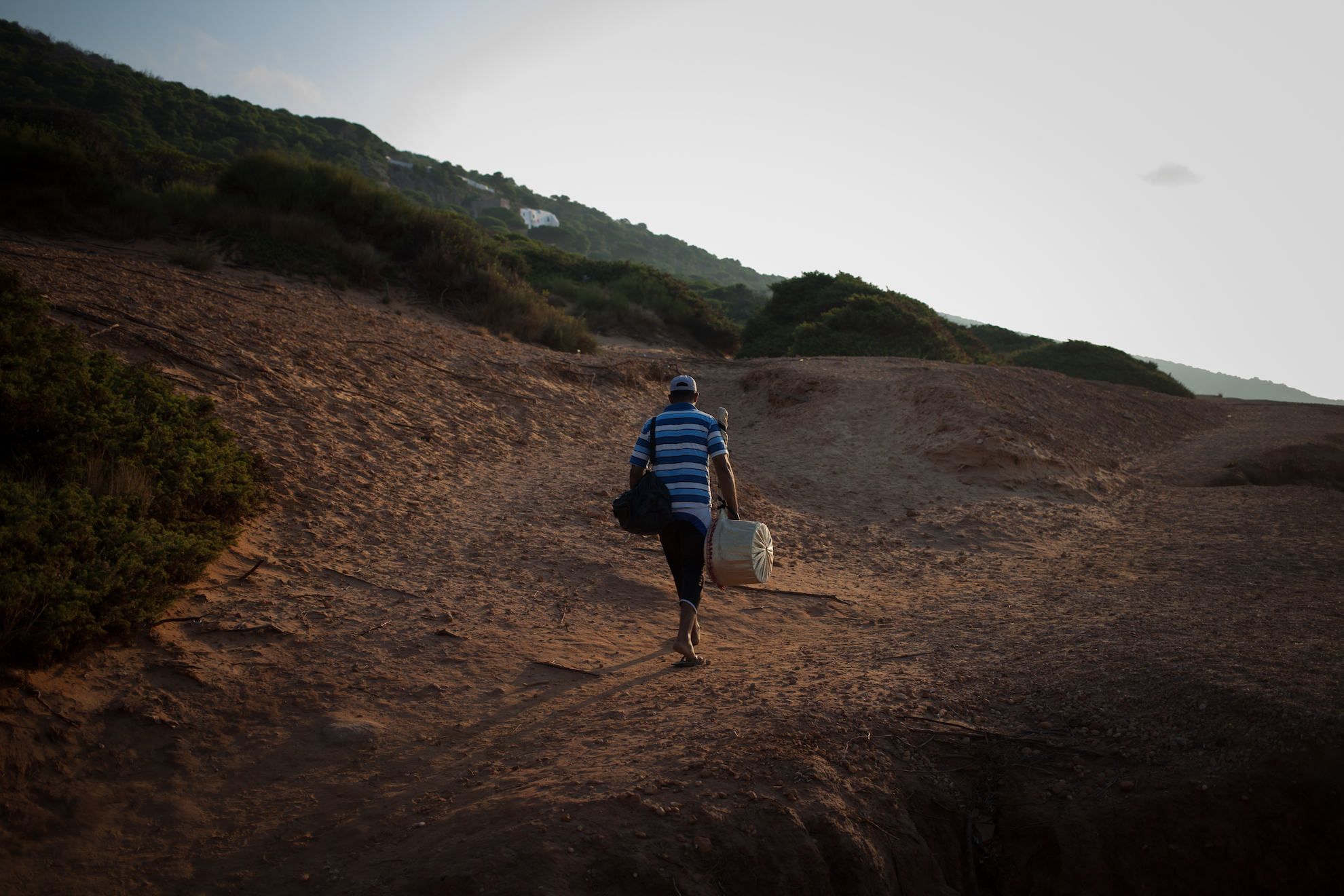A long time ago now – it was before the Covid and its first confinements – journalist Théophile Pillault wrote an article for PAM dedicated to this ritual, illustrated by the superb images of photographer Augustin Le Gall, who has been visiting communities for ten years. followers of this secret ritual, often confined to private homes or consecrated shrines. The photographer intended to continue the adventure with a documentary film, and the journalist proposed to extend it with an episode centered on the influence of the stambeli on a whole generation of musicians, fans of electronics, fascinated by the hypnotic loops of his music. of trance. This is how the first buds of this documentary triptych christened Stambeli, last dance of the spirits. It is finally available, as of today, on the PAM YouTube channel.
Music and Spirits
To enter this universe as mysterious as it is abundant, you needed keys. Augustin Le Gall found them, one day in 2013, in the person of Riadh Ezzawech, one of the last mediums (arîfa) who ensures, in the stambeli, communication between the living and the spirits seeking to incarnate. ” I knew, says the photographer and directorthat in the month of chaaban – the one that precedes the month of Ramadan – there were a lot of ceremonies, and when I met Riadh, he was preparing his pre-Ramadan ritual in which he must call all the spirits that it represents to attest to its rank and to bless the community “. Riadh is also guardian of the sanctuary (zaouia) Sidi Ali Lasmar, in the heart of the medina of Tunis, where a black saint, a former freed slave, is buried.
For a long time, for several years, Augustin frequented the zaouia, the ceremonies held there, and the healing rites hidden in the heart of private homes. It was also there that he met Lotfi Karnef, whose family has long been linked to the stambeli. He chose to learn the gombri (or guembri), this three-string bass lute which, supported by the chkacheks (metal castanets), gives the rite its rhythm, calling the spirits to dance. It is with this autodidact, who learns in the shadow of Riadh Ezzawech, that the first episode begins. His instrument and the role he plays in the ritual are in the spotlight: ” It’s a musiche explains, that makes you vibrate from within. The low notes are the soul of the gombri, it resonates throughout your body ».
He, whose parents are the guardians of the sanctuary of Sidi Saâd, east of Tunis, also accompanies Riadh Ezzawech in the pilgrimage that the medium regularly makes to the cave of Sidi Ali Al Mekki. It is dug into the rock, on the side of a mountain that rushes into the sea. A tongue of sand extends it, escaping to the horizon, pointing to the sun that is dying in the waves. To get there, Riadh and his family walk in procession, along the coast and the painful stories of which it was the theater: not far from there, a port was used for the slave trade from sub-Saharan Africa. It is to them in particular that we owe the importation of animist practices which took refuge in the shadow of the saints and of the Muslim religion. The sea is also home to spirits to whom it is fitting to pay homage, through songs, music, and appropriate sacrifices. This is what Riadh and his family do, then, once they reach the sanctuary, the music launches an extraordinary sequence that shows the fever and the beauty of the dance of the spirits that Riadh incarnates in turn (he is the mouth of forty d between them), in a panting trance that gains in intensity as the gombri and the chkacheks redouble their ardour. Augustin, who had already extensively explored the world of Moroccan gnawas, remembers the shock of discovering stambeli: “ what attracted me was this question of the invisible, which exists through humans, ceremonies, dances… and how this invisible materializes. There is a staging of the arrival of the spirits – materialized by the changes of costumes, their objects, sometimes the throne which indicates their rank… visually it is very strong ». We couldn’t say better the effect produced by the images (by Hazem Berrabah & Augustin Le Gall) and the editing of this sequence which, without trying to explain everything, immerses us in the ritual.
Who am I ?
« Who am I ? Am I Riadh, Am I arifa? God guide me It is with this question from Riadh Ezzawech that the first episode of the documentary ends: it opens directly on the second, entirely centered on the medium and the sanctuary for which he is responsible: Sidi Ali Lasmar. It is said that when the Ottoman Empire had its governors in North Africa (in the 18th and 19th centuries), one of them granted the communities of the stambeli four houses dedicated to worship. Later, others will be added to it but at independence, the nationalist policy of President Habib Bourguiba then the propagation of a more rigorous vision of the Muslim religion will relegate the stambeli to a confidentiality bordering on clandestinity. Many houses will then disappear, and with them a whole history and tradition. The second episode, titled Legacy, precisely shows us Riadh in his struggle to keep it alive, and preserve the sanctuary, which the owner – who had bought it from the State – wants to resell, even if it means putting an end to its rich history. And at the same time, to what, all these years, has given meaning to Riadh’s life. Because he was not destined to enter the stambeli, it was the spirits who called him… in any case, this is how the mediums consulted at the time interpreted his illness, introducing him to his role as a medium. able to guide, appease, and interpret the wishes of these entities.

Riadh struggles to find the successor: but what will become of him if the ritual disappears, for lack of replacements: “ it would be like a social death explains Augustine. Hence his question: who am I ? who is Riadh if he is no longer arifa? And the person concerned, in the documentary, to add: “ a country without history is not really one “. A question that applies to the stambeli, as to other original traditions that history and a certain idea of modernity have gradually buried. The stambeli, explains Théophile Pillault, director of the 3rd episode, “ it’s a dot anchor of the Africanness of Tunisia. Ifriqiya is the old name of Tunisia, but we confined the country to Arab, Mediterranean, Carthaginian visions… dialects and particularism have been smoothed out “. In the absence of new initiates, this African anchorage and its richness are exhumed by a generation of young artists inspired by the stambeli. In their own way, they rediscover it and offer it, through music, an unexpected new life.
Electro-stambali: a new life in music?
Théophile Pillault landed in Tunisia for the first time in 2014, on the eve of the legislative elections which saw the victory of the Ennahdha party. Very quickly, he meets DJs and electro producers like Deena Abdelwahed and the Arabstazy collective, of which Amine Metani, the main character of this third episode, is a member. Transmission. It is with them that he discovers a very rich alternative and underground scene with hyper sharp proposals, certainly in a westernized microcosm… artists who have one foot in Tunisia and the other in France, who keep an ear on the English and French scenes, and at the same time who are Tunisian, Arab and African, and who have at heart to dig this heritage there ».
In the documentary, we find Amine Metani precisely when the Lyonnais goes to the Sailing Stones festival to play there, and that he takes advantage of this stay in his native country to deepen his research around the stambeli. He visits Riadh, attends a researcher’s conference around the stambeli, stops at Dar Barnou – another of the stambeli houses where he has taken his customized neo-gombri to be amplified and subject to all the modulations that allow pedals and other mixers. Amine, co-founder of the Shouka label, is not a “practitioner” of stambeli, but his universe inspires him: ” It is a ritual that I feed personally in my work as a musician, in my own spirituality, but these are not communities to which I belong he explains facing the camera. And in fact, he, like some of his comrades, draws from the music of the stambeli riches that flourish in their synthetic sounds.

But the issue goes beyond that: “I found it fascinating, says Théophile Pillaultto follow a guy like Amine who has a double culture, to see him walking a path of quest, of rediscovering his identity because it is also his country: it was fascinating to see how a kid born in Tunisia but who makes his life in France returns to the country to rediscover something profound there…” . And this is one of the fundamental questions that the documentary raises: faced with the disappearance of such a rich tradition, is there in this re-appropriation by the younger generations a form, certainly, partial, of transmission , and the perpetuation of a legacy? Probably not as much as Riadh had hoped, but nonetheless: ” things are destined to disappear, to change, and today what young people do brings people together… we have moved the form – the stambeli heals everyday problems, and music takes people out of their problemss” analyzes Augustine. This relationship, Amine Metani sums it up well: “ce who called me in the stambelihe explains while his colleague Ghoula mixes in a party, it is this parallel that I immediately made between an ancient ritual, a form of access to the sacred and to trance through possession, and then the club culture that I associate in a certain way with a ritual , to a form of communion centered more on the figure of the DJ “. And Théophile concludes: The stambeli only hybridized, it crossed the desert to arrive in North Africa, and today Ammar 808 who lives in Copenhagen, makes bass music with the stambeli: hybridization is a form of perpetuation “. In a Tunisia where identity tensions are resurfacing, this idea of interbreeding and diversity embodied by these mutations is salutary. The stambeli is a fine example, and this documentary – between sacred and profane, pays it the most beautiful of tributes.
Watch the full documentary series here.
Stambeli, last dance of the spirits (3x10min, France/Tunisia 2022)
A film by Augustin Le Gall and Théophile Pillault
Based on an original idea by Augustin Le Gall
Produced by PAM I Pan African Music and APA: Artists Associated Producers
With the support of CNC Talent

